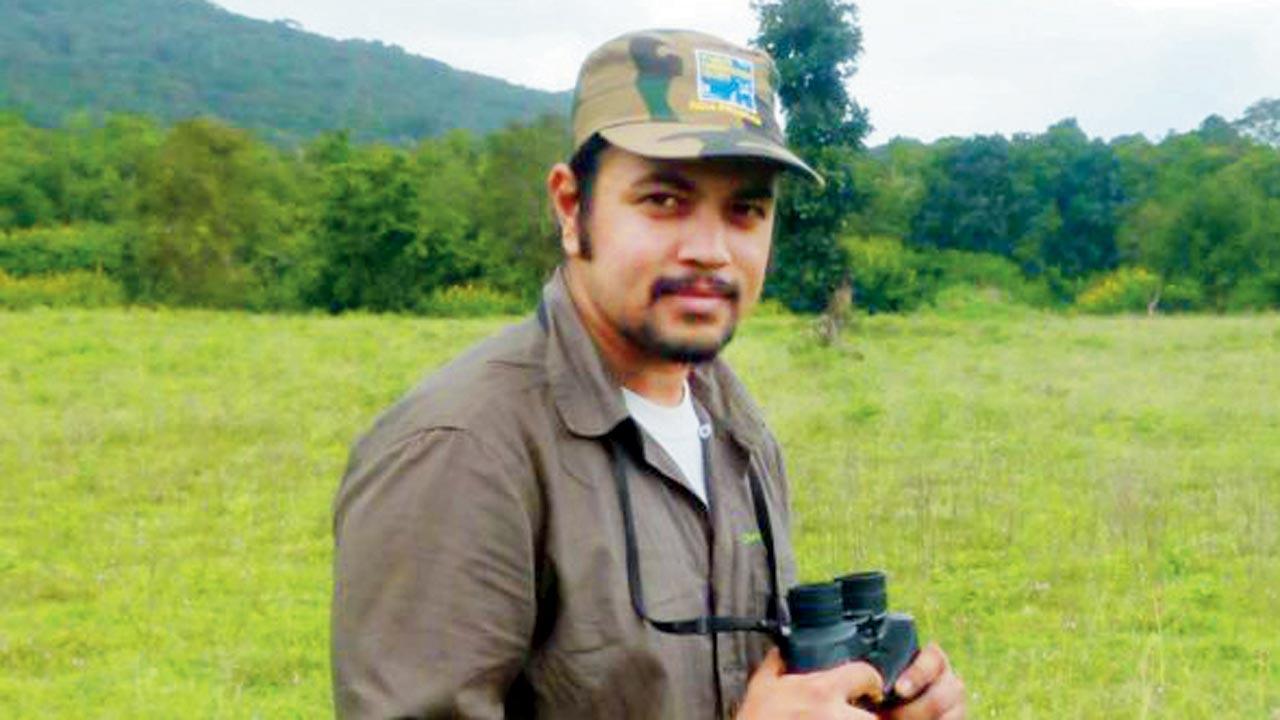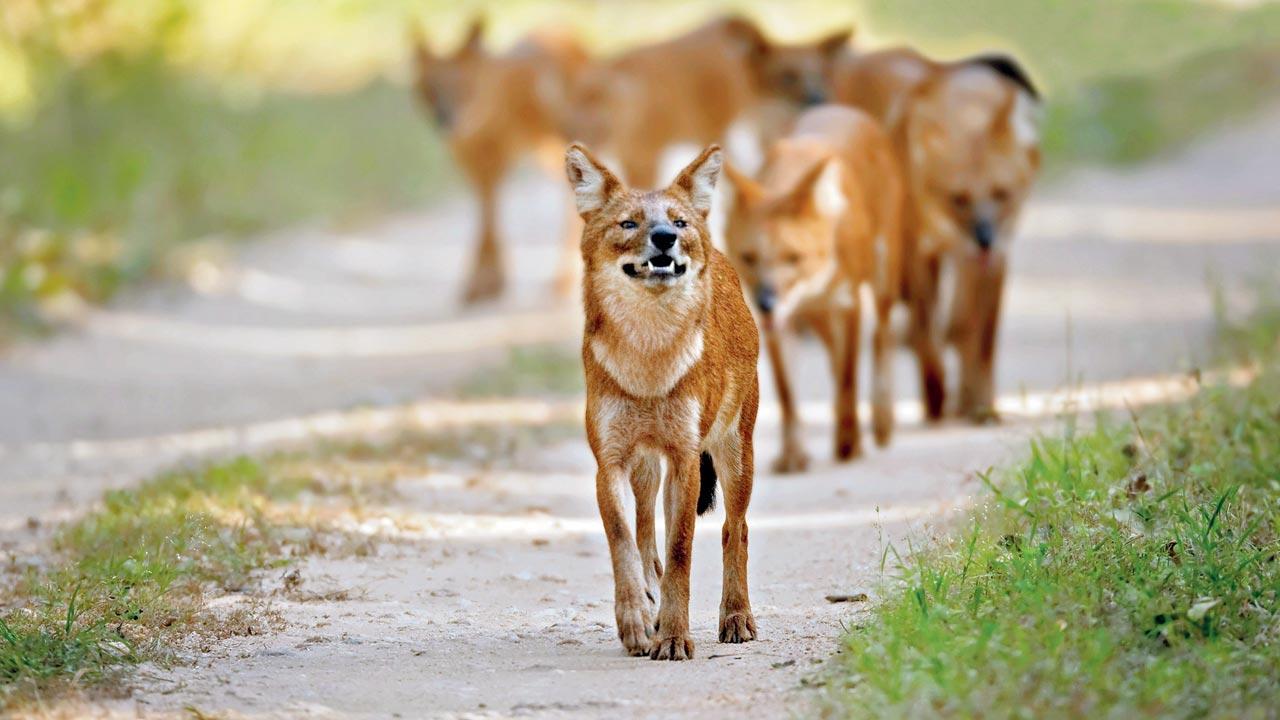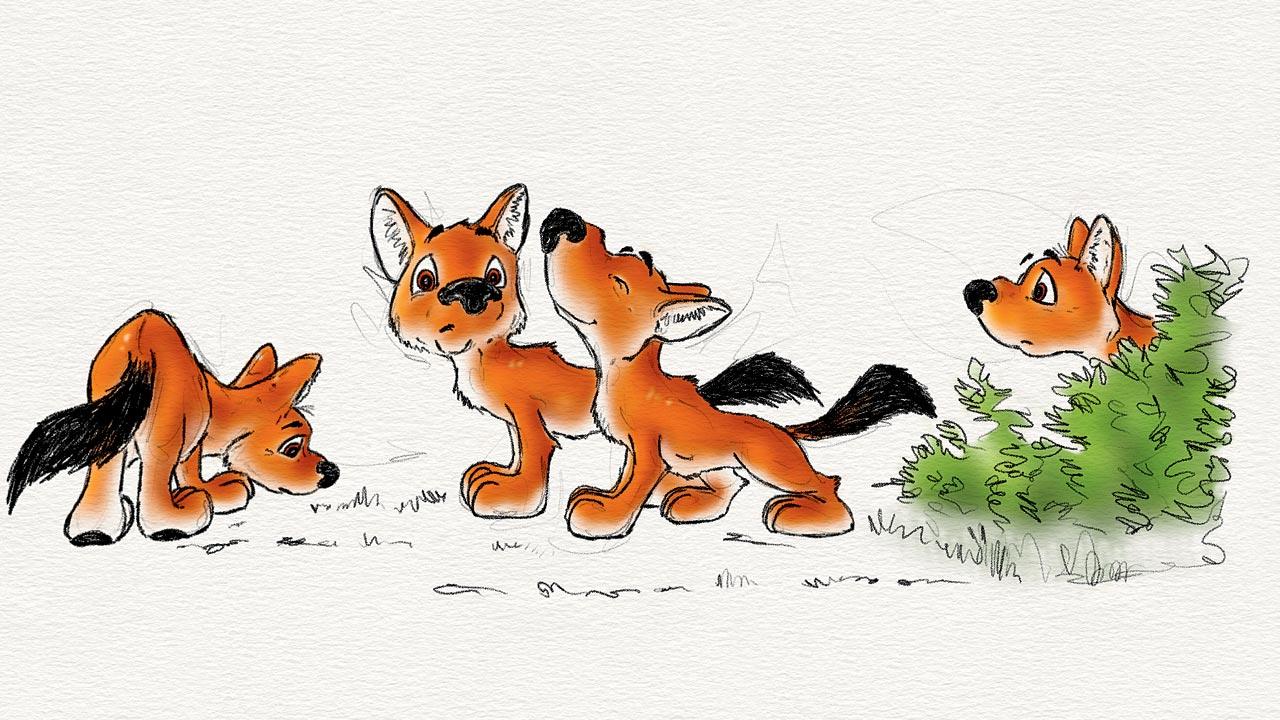A Bengaluru-based researcher and team are back post-pandemic in the Wayanad forests to estimate the population of the dhole, a wild dog that’s as threatened if not more, as the tiger

Srivathsa’s team engaged in data collection in Wayanad’s forests; (right) Srivathsa collecting dhole poop. The team looks for faeces samples, extracts the DNA, and ends up with a DNA signature that helps identify the individual animal
Wildlife biologist Arjun Srivathsa is excited that he and his enthusiastic bunch of field researchers and biologists have returned to the forests of Wayanad Sanctuary in Kerala post-pandemic. On an average, they spend close to 10 hours every day, covering hundreds of kilometers to collect genetic information on dholes. This is to identify, and subsequently estimate their population as part of what is perhaps the world’s first multi-year population estimation and monitoring project focussing on wild dogs or dholes.
ADVERTISEMENT
The project, which began in April 2019, offered the team multiple opportunities to encounter large packs. They found that the area supports a population of 50 dholes at fairly high densities (12-14 per 100 sq km). Carnivore population monitoring must be carried out annually to understand patterns and trends, survival and related aspects of their demography. But, the team’s field work came to an unexpected halt in 2020 following the outbreak of COVID-19.
 Arjun Srivathsa
Arjun Srivathsa
“In April 2022, after we resumed research, we chanced upon a pack of 12 dholes while on our survey path. Had we spotted this explosion of rusty brick red dogs in 2019? Was this a new pack? Did some members from the packs we saw then survive in this pack? It is difficult to say, because dholes look identical,” explains Srivathsa over the phone from Bengaluru, adding, “To find the answers, we collect their excreta, extract the DNA, and use the unique genetic signatures to arrive at findings in our laboratory at the National Centre for Biological Sciences in Bengaluru.”
Edited excerpts from the interview.
Why is it important to study this species and preserve its numbers?
Dholes are important apex predators of India’s forests, just like tigers. They are an integral link in the food web, and help keep the ecosystem in balance. Besides the tiger, the dhole is the only large carnivore in India that is considered Endangered by the IUCN (International Union for Conservation of Nature). While we do not yet have information on their actual population status in the country, we can reasonably assume that 2,000-3,000 of them survive, which makes them as threatened, if not more, as tigers. India is likely to have the highest dhole population among other range countries where they occur; so our country is an important stronghold for the species moving into the future.
The dhole is a fascinating animal. It lives in highly social groups, hunts and eats animals that are 10 times its body size; it “whistles” to communicate and finds interesting ways to thrive alongside big predators like the tiger, bear, wolf and leopard.

Dholes are highly social animals and hunt in packs. They live in a forest habitat. Pic courtesy/Ramki Sreenivasan
What is threatening its habit?
Dholes are very habitat-sensitive. In most parts of their distribution range, they occur in forests. So, loss of forest cover is a key threat to their survival. Secondly, our decade-long research across India has revealed that dholes consistently avoid areas that had high human disturbance (direct human movement in forests and indirectly through grazing cattle in forestlands). This reduces the total habitat available for dholes. Thirdly, India doesn’t yet have proactive conservation or management actions tailored for dholes. We need this for safeguarding their populations where they currently persist and thrive, but also in areas like northeast India where conflict-related killings of the dhole is more commonplace.
Why is collecting their poop the only method to monitor numbers?
Carnivores like tigers, leopards, bears and dholes typically occur in low numbers, unlike herbivores like deer, gaur or antelopes. To count their numbers, we rely on camera traps set up across a large area, to photograph them. They trigger these while walking along forest paths. We identify their numbers based on body markings—like the stripes on a tiger or rosettes on the leopard—because each is unique. We then apply statistical models to estimate the total numbers, including those that exist in the area but were never captured by the cameras.
But for the dhole and bear, because they do not have unique pelage [fur, hair, or wool] patterns, we cannot adopt this approach. Instead, we study their poop. Like body markings, each individual’s DNA is unique. So we look for their poop, collect samples, extract the DNA, and end up with a set of unique individuals, not based on their physical appearance, but on their DNA signatures. We apply the same statistical models and estimate their numbers.

Srivathsa’s illustration of a pack of dholes
You sketch wildlife. How did that come into this mix?
My artwork has almost always revolved around creating renditions of wildlife. But doodling began in 2012. It was the year when I was in Bandipur Tiger Reserve to conduct field work on dholes as part of my MSc thesis. My work would typically involve covering 15-20 km every day, walking along forest roads and recording animal signs, which would take six-seven hours. At the end of each day, I would sit under a tree or by a waterhole and doodle interesting elements that I had spotted—animal track marks, a herd of elephants, a bear, tiger, a pack of dholes and so on—until our field vehicle would arrive to pick me up. Since then, I’ve almost always carried a sketchbook during field work.
The dhole dossier
. Dholes are also known as Asiatic wild dogs (scientific name: Cuon alpinus); packs can have two to 25 members. Dholes share space with other predators like tigers, leopards, wolves, and snow leopards.
. They are found across central, south and southeast Asia. In India, their main clusters are across three landscapes: the Western Ghats, central India and northeast India.
. Dholes are carnivores that feed on a wide range of animals, from the tiny hare to the massive gaur. However, the sambar deer is the dhole’s most common prey across its range.
. Dhole packs have an alpha male and a female that reproduces. The other members help in hunting and raising the alpha pair’s pups.
. Dholes have gone extinct from 80 per cent of the areas that they previously inhabited.
 Subscribe today by clicking the link and stay updated with the latest news!" Click here!
Subscribe today by clicking the link and stay updated with the latest news!" Click here!







